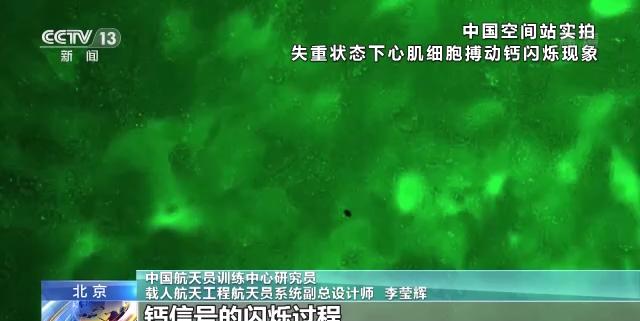Today is the space with you [Issue 1430]
The second lesson of the "Tiangong Classroom" will be held at 15:40 today (23rd) at the China Space Station, and the astronauts of shenzhou 13, Zhai Zhigang, Wang Yaping, and Ye Guangfu, will cooperate with each other to teach. This is also the third time that Chinese astronauts have taught space.
An important task of the Shenzhou 13 astronauts in space is to complete various on-orbit experiments. What's the point? Let's look at the experts' interpretation.
Li Yinghui, researcher of China Astronaut Training Center and deputy chief designer of astronaut system of manned space engineering:
The Shenzhou 13 mission completed more than 20 (on-orbit) scientific experiments on the basis of Shenzhou 12. On the one hand, these experiments revolve around the new technology of astronaut health monitoring, on the other hand, around the new discoveries of new scientific knowledge, and the third around the accumulation of data, and complete a series of innovative research.
The space weightless environment of the space station provides convenient conditions for human beings to carry out life science research. Relying on the Chinese space station, the mainland established for the first time a long-term cell culture system and cell model under space conditions during the Shenzhou 13 multi-group in orbit, and using such a system and culture model, researchers completed several internationally leading life science experiments.
● Human first observed "calcium signal flickering" of cardiomyocytes under weightless conditions

We have completed the world's first case of renal epithelial cells from human urine, which are genetically reprogrammed into vibrant stem cells with multiple functions, and then differentiated into cardiomyocytes. Through the editing of a fluorescent protein by gene editing technology, then through the fluorescence of the fluorescent protein, we can see the flickering process of calcium signal during contraction, which is also the first time in the world to see the beautiful contraction process of cardiomyocytes (in a weightless environment).
Using the gravity-sensitive characteristics of cardiomyocytes, researchers can better interpret the impact of weightlessness on humans compared with the contraction process and contraction characteristics of cardiomyocytes under gravity conditions and weightless conditions according to the observations of astronauts in orbit.
On the one hand, this technology can understand the characteristics of cardiovascular changes under our weightless conditions, and on the other hand, it also provides a very good experimental model for public health, human regeneration and aging, including human longevity and heart disease.
● Mainland China completed the world's first skin stem cell weightless suspension culture experiment
In addition, relying on the Chinese space station and Shenzhou 13, mainland researchers have also completed the world's first suspension culture experiment under long-term weightless conditions of skin stem cells.
The cell is in one of our small houses, then there are 4 channels, and this cell can survive and survive in our system for up to a month (30 days), providing us with an important technical platform for cell research on long-term weightless conditions.
According to experts, carrying out such cell space experiments will help human beings better understand life and break through themselves.
We also have some topics, such as aging and differentiation. Why we make stem cells provides a very important basic scientific support for human health. If we astronauts want to fly farther and fly healthier, it is inseparable from the new gains and new understandings that our aerospace medicine has continuously gained. Only when these new harvests and new understandings are more and more, our supporting role for astronauts will become stronger and stronger.